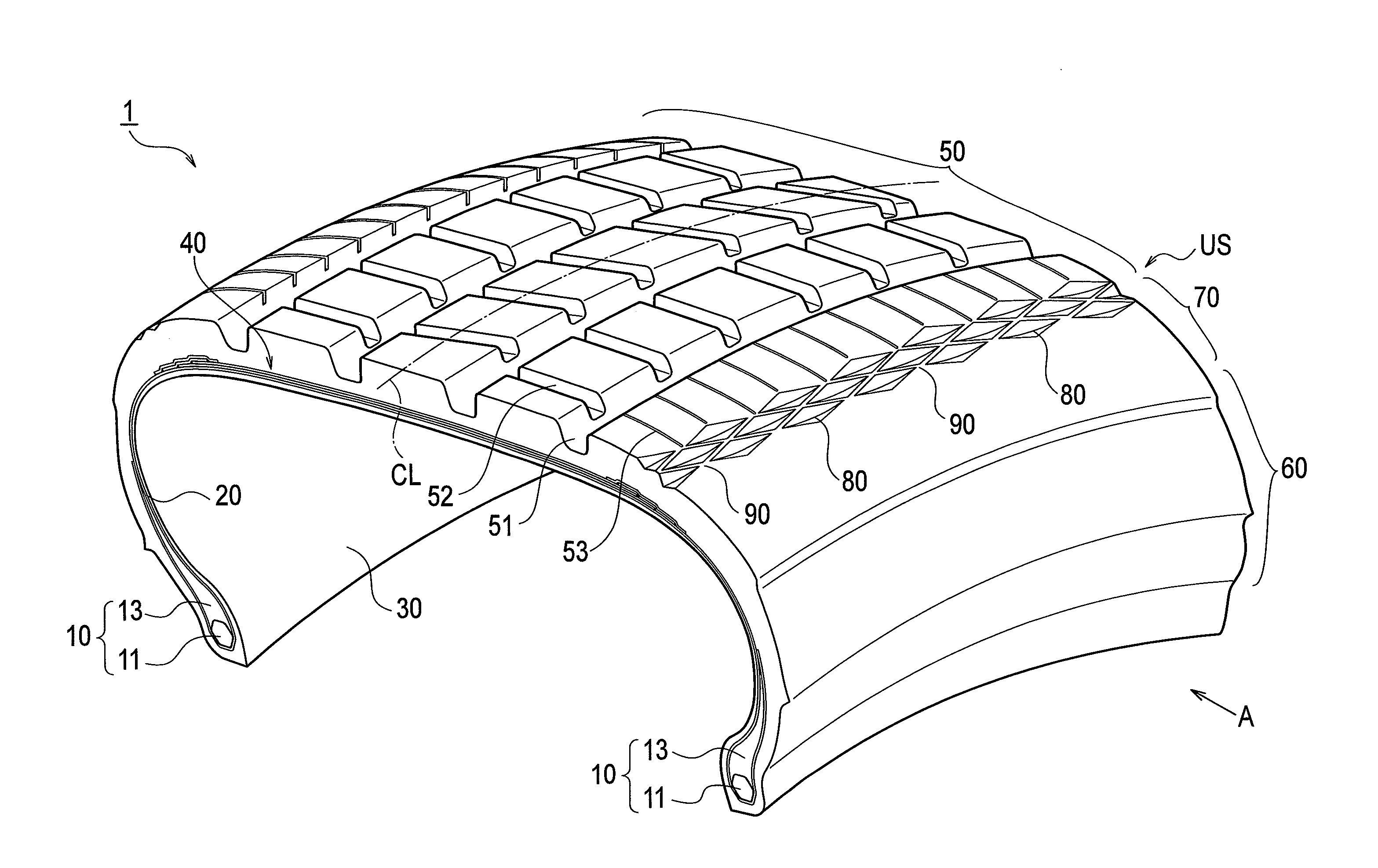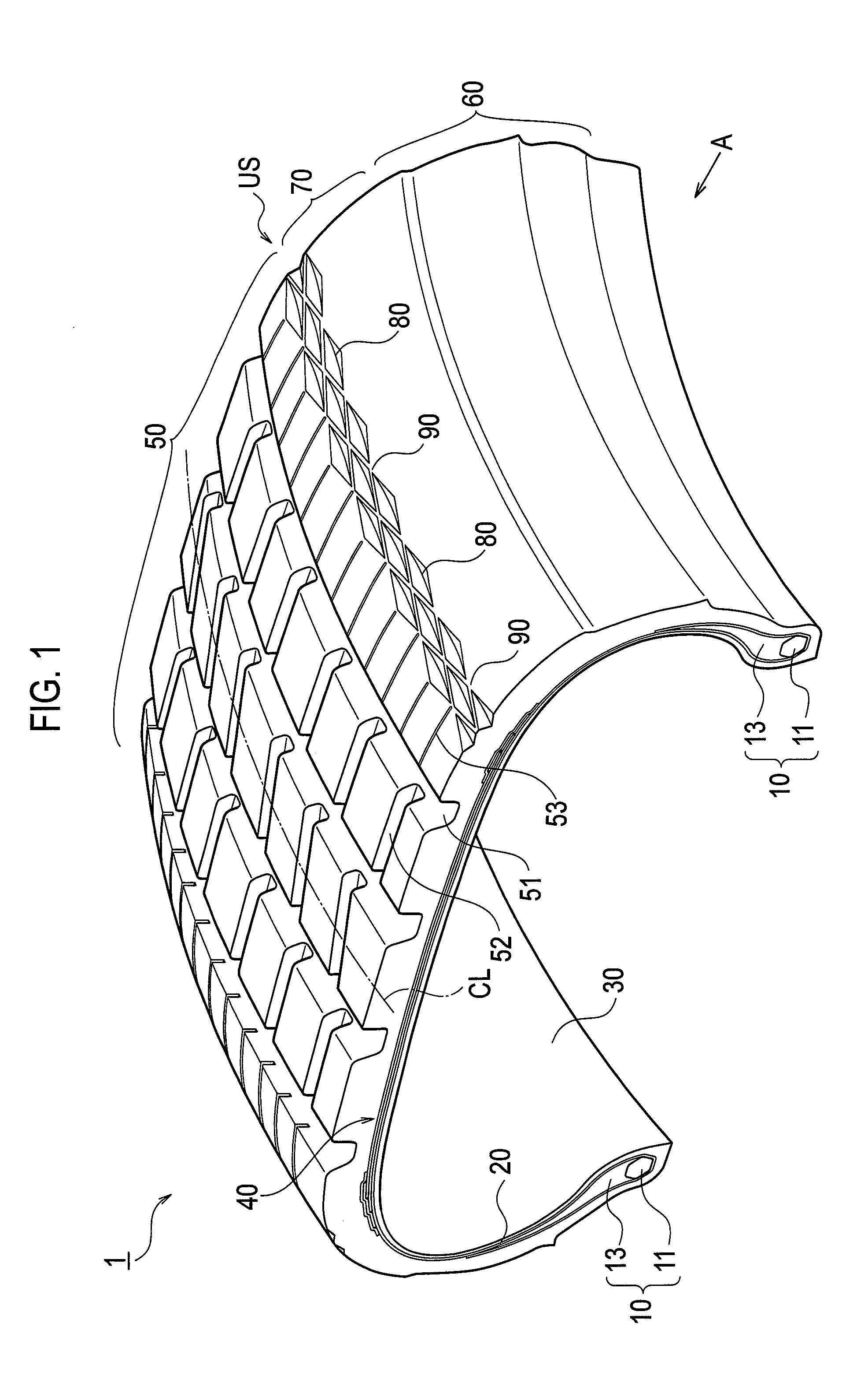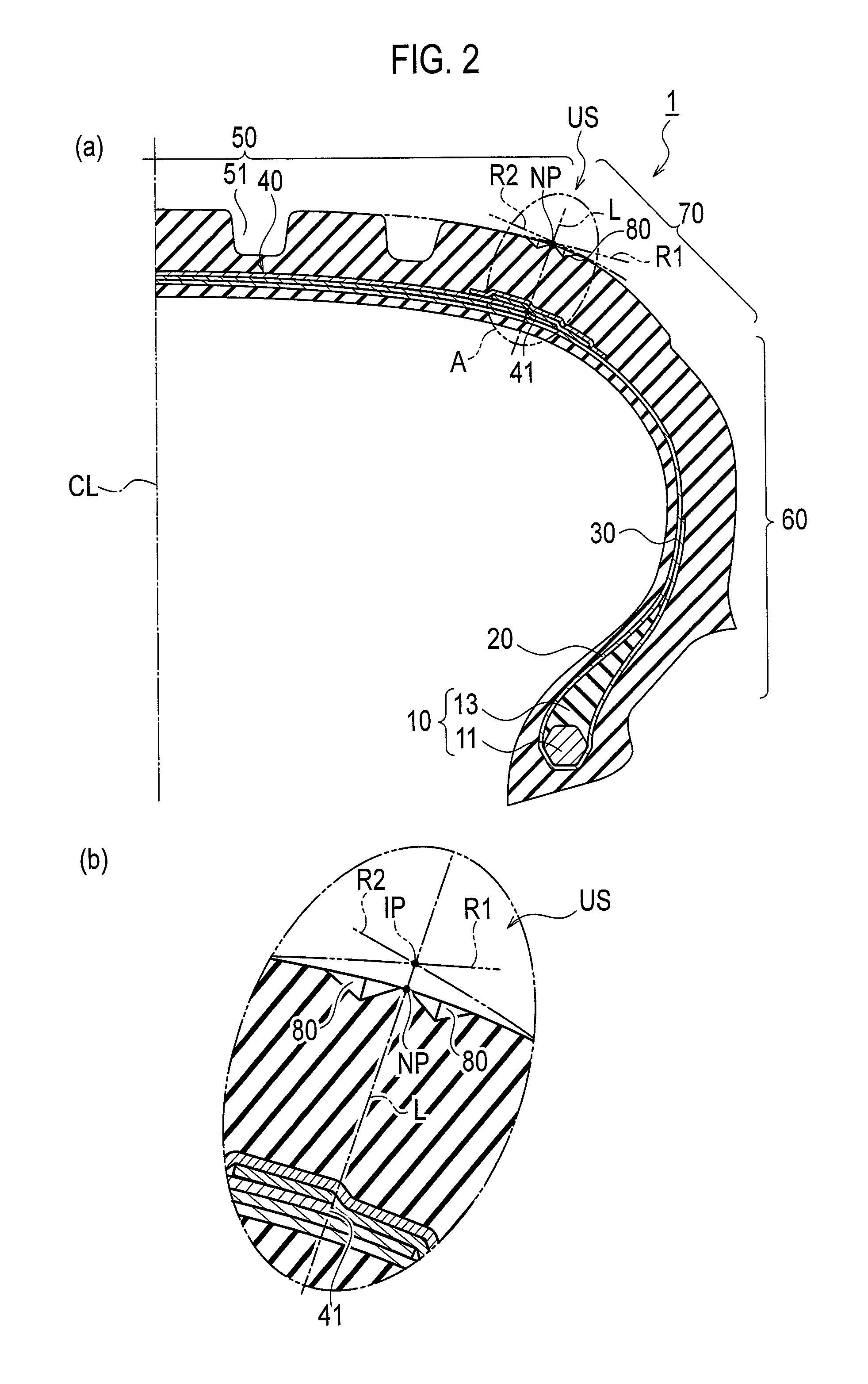Tire with recessed portions formed on buttress portion
a buttress and recessed technology, applied in the field of tires, can solve the problems of increasing road noise and road noise, and achieve the effect of suppressing the generation of road noise due to the vibration of the buttress portion and reducing road nois
- Summary
- Abstract
- Description
- Claims
- Application Information
AI Technical Summary
Benefits of technology
Problems solved by technology
Method used
Image
Examples
first embodiment
[First Embodiment]
[0041]In the following, a pneumatic tire 1 according to a first embodiment will be explained. Specifically, (1) Overall configuration of pneumatic tire, (2) Detailed configuration of recessed shoulder region, (3) Comparative evaluations, (4) Operation and effect, and (5) Modifications will be explained.
(1) Overall Configuration of Pneumatic Tire
[0042]First, the overall configuration of the pneumatic tire 1 according to the first embodiment will be explained while referring to the drawings. FIG. 1 is a perspective view illustrating a part of the pneumatic tire 1 according to the first embodiment. FIG. 2(a) is a cross-sectional view in the tread width direction of the pneumatic tire 1 according to the first embodiment. FIG. 2(b) is an enlarged view illustrating an area enclosed by the double dot and dash line A of FIG. 2(a). Furthermore, the pneumatic tire 1 may be filled with, other than air, an inert gas such as nitrogen gas.
[0043]As illustrated in FIG. 1 and FIG. ...
first modification
(5-1) First Modification
[0095]First, the configuration of a recessed portion 180 of the pneumatic tire 1 according to a first modification will be explained while referring to the drawings. FIG. 6 is a tread developed view illustrating the area around the recessed shoulder region US according to the first modification.
[0096]In the first embodiment described above, the recessed portion 80 is rhombic, and the sides 81 that form the recessed portion 80 are slanted in relation to the tire circumference direction TC. In contrast, in the first modification, as illustrated in FIG. 6(a), the recessed portion 180 is rectangular. Also, the sides 181 that form the recessed portion 180 are provided along the tire circumference direction TC or the tire radial direction TR.
[0097]Also, the recessed portion 180 is not necessarily required to be rectangular, and as illustrated in FIG. 6(b), may be triangular, and the shape of the recessed portion 180 may be appropriately varied to correspond to diff...
second modification
(5-2) Second Modification
[0098]Next, the configuration of a recessed portion 280 of the pneumatic tire 1 according to a second modification will be explained while referring to the drawings. FIG. 7 is a tread developed view illustrating the area around the recessed shoulder region US according to the second modification.
[0099]In the first embodiment described above, the recessed portion 80B is provided in a position shifted, in the tire circumference direction TC, from that of the recessed portion 80A and the recessed portion 80C. In contrast, in the second modification, as illustrated in FIG. 7(a) and FIG. 7(b), a recessed portion 280A, a recessed portion 280B, and a recessed portion 280C are provided in such a way that they are lined up in the tire circumference direction TC. Furthermore, with the recessed portions 280 illustrated in FIG. 7(b), the surface portion 90 does not necessarily have to be formed surrounding each of the recessed portions 280, and may be provided as a pred...
PUM
 Login to View More
Login to View More Abstract
Description
Claims
Application Information
 Login to View More
Login to View More - R&D
- Intellectual Property
- Life Sciences
- Materials
- Tech Scout
- Unparalleled Data Quality
- Higher Quality Content
- 60% Fewer Hallucinations
Browse by: Latest US Patents, China's latest patents, Technical Efficacy Thesaurus, Application Domain, Technology Topic, Popular Technical Reports.
© 2025 PatSnap. All rights reserved.Legal|Privacy policy|Modern Slavery Act Transparency Statement|Sitemap|About US| Contact US: help@patsnap.com



